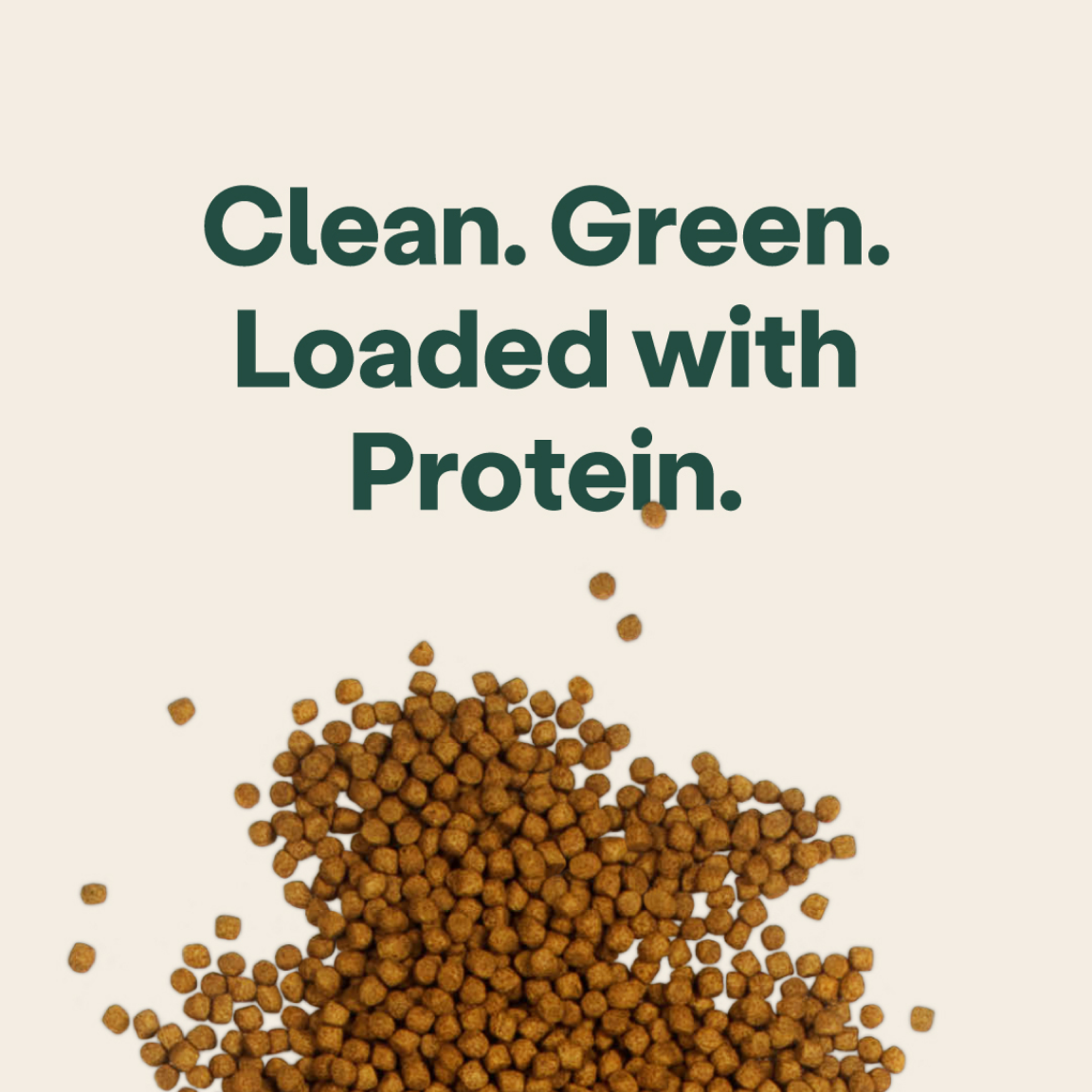

What Can We Learn From Ingredients?
We have all heard it before: Dogs cannot be vegan, they need meat! It is no secret that many individuals will claim that dogs need certain ingredients. But the truth is that dog's need nutrients, not ingredients.
"Dogs have dietary requirements for energy and essential nutrients, but they do not have a recognized requirement for animal-derived ingredients per se” (Dodd et al., 2018).
Nutrients vs Ingredients
Dogs eat to acquire nutrients. Nutrients are compounds in food that the body uses for normal growth, maintenance, and repair, and they are either essential or non-essential. Essential nutrients are those that the body does not produce in sufficient quantities to meet the body’s demands, and therefore they must be obtained from the diet.
The six nutrient classifications are:
- Water
- Protein
- Fat
- Carbohydrates
- Vitamins
- Minerals
Only three of these nutrients are energy-producing, meaning they contribute to the calorie content and provide the body with energy. Those are protein, carbohydrates, and fat. Why do dogs need energy? Ultimately all living organisms require energy for all bodily functions, and the amount of food an animal consumes is guided by the amount of energy they require. Feeding recommendations for each specific dog food will be based primarily on making sure a dog is receiving the appropriate amount of calories, or energy, and all remaining nutrients should be balanced relative to the energy density to make sure your pet is receiving the appropriate amount of all nutrients.
So yes, dogs eat to acquire nutrients (and energy). It is the ingredients that deliver these nutrients. Ingredient selection is of utmost importance when formulating a dog food, as ingredients are essentially nutrient vessels, and many work to provide a variety of nutrients. For example, the dried yeast in our formulas not only provides protein, but also provides fiber and B vitamins to the diet, which are important for digestive health and cell function respectively.
Now back to the question at hand, what do ingredients really tell us?
What We Can Learn From the Ingredients List
From the ingredients list we can determine:
- Whether the food contains a specific ingredient your pet is allergic to. The most common food allergens for dogs are beef, chicken, dairy, wheat and lamb. All Wild Earth formulas are free from these ingredients.
- Whether the food contains ingredients you are hoping to avoid such as pulse ingredients which include lentils, chickpeas, peas, etc. Legumes have been associated with the development of canine dilated cardiomyopathy, although correlation does not equal causation.
- Whether the food does not contain certain types of ingredients such as grains. Grain-free foods often replace grains with legumes and potatoes, and have also been associated with the development of canine dilated cardiomyopathy, although correlation does not equal causation.
- Whether the company is dedicated to using high quality ingredients. For example, while some companies may use cheap ingredients to provide fiber such as dried beet pulp, other companies such as Wild Earth, uses fructooligosaccharides and inulin which are heavily researched ingredients known to promote digestive health and feed the healthy gut bacteria which supports immune function.
While the ingredients list on a pet food does give us some information, it does not give us the whole picture.
What the Ingredients List Cannot Tell Us
Ingredients must be listed in order of weight, which includes water. Therefore, ingredients with high water content (like fresh meats, for example) are going to be listed higher than similar amounts of dry ingredients even though they may contribute fewer nutrients to the overall diet.
Furthermore, pet food manufacturers go to great lengths to make certain that the ingredient list is appealing to pet owners. For example, they know that consumers have been conditioned to look for meat (or a protein source) as the first ingredient and will therefore use protein sources with a high water content such as raw chicken that contains up to 73% water. After cooking, most of that moisture is lost, reducing the meat content to just a fraction of its original weight. Therefore, even if chicken is listed as the first ingredient, once water loss is accounted for, it would drop down on the ingredients list.
Our Wild Earth Performance formula contains dried yeast as the first ingredient, meaning it does not contain water and is truly the ingredient present in the greatest amount.
The fallacy that meat must be the first ingredient on an ingredient list has also led to the common practice of ingredient splitting. Ingredient splitting is a way to artificially boost a desirable item (like meat for example) to a higher spot on the ingredient list while lowering the ranking of a less desirable ingredient. The ingredients on an ingredient list are listed in order of its precooking weight. Let’s consider an example where a manufacturer creates a dog food that contains rice as the main ingredient of the recipe, and some chicken. An ingredient list would have rice listed as the first ingredient. If the manufacturer breaks rice into smaller portions of similar ingredients, however, such as white rice and brown rice, then they can fall further down on the ingredient list and chicken can then be listed as the first ingredient.
Most importantly, the ingredients list does not tell us whether the diet is complete and balanced.
What Does "Complete and Balanced" Mean?
No discussion regarding nutrients is complete without discussing the term “complete and balanced”—what does it mean? To answer this question, I first need to introduce The Association of American Feed Control Officials (AAFCO). AAFCO is an organization made up of federal and state regulatory officials that has established nutritional requirements, guidelines for standard ingredient definitions and product labels, and feeding trial protocols for pet foods. However, AAFCO does not directly test, regulate, approve or certify pet foods to make sure that they meet these standard requirements. Instead, pet foods are regulated at the state level. Most states follow AAFCO model regulations, however interpretation may differ between states.
AAFCO guidelines for pet food labels include the nutritional adequacy statement (aka the complete and balanced statement), which explains whether the food contains essential nutrients, how that was determined, and for which life stage the food is appropriate for. Essentially, this statement lets the consumer know if the food is “complete and balanced” for a particular life stage. For a dog food company to claim that their food is “complete and balanced” for a specific life stage, they must validate the claim either by nutrient content analysis or AAFCO compliant feeding trials. The nutrient content can be determined either from testing a sample of the finished diet, or by using the nutrient content of the individual ingredients in the food to calculate the diet composition. The former is preferred as ingredients are inherently variable in nutrient content because interactions with other nutrients and processing can alter bioavailability in the finished product. Although companies do not typically provide this information, you may contact the company to inquire about testing done on the finished product, quality control measures and the qualifications of the individual(s) formulating the diet.
At Wild Earth we test our finished products to ensure they not only meet, but exceed, AAFCO nutritional requirements for adult maintenance.
To make sure that a dog is receiving the appropriate amount of nutrients from their food, it is important they be fed a diet for their specific life stage— adult maintenance, gestation/lactation, or growth. It is important to note that dog food formulated “for all life stages” is formulated to meet the nutrient requirements for growth and reproduction, which are different from non-reproducing adult dogs. In comparison with maintenance requirements for adult dogs, puppies, for example, require a more calorically dense food with higher concentrations of fat, protein, and essential minerals. Large and giant breed puppies have even more specific needs, especially with regard to calcium. AAFCO guidelines now require pet foods that are categorized for growth to specify if they have met additional guidelines for puppies expected to be more than 70 pounds at their mature adult weight.
Wild Earth is Committed to Quality
While the ingredients list does not give us the full picture, it can give us some information. At Wild Earth we believe in choosing each ingredient for a specific purpose, ensuring our finished products surpass AAFCO nutritional requirements for adult maintenance. So next time someone says dogs need meat, make sure to let them know that dried yeast contains more protein by weight than beef, contains all 10 essential amino acids dogs need, provides beta-glucans and vitamins, and is incredibly sustainable to produce.











































